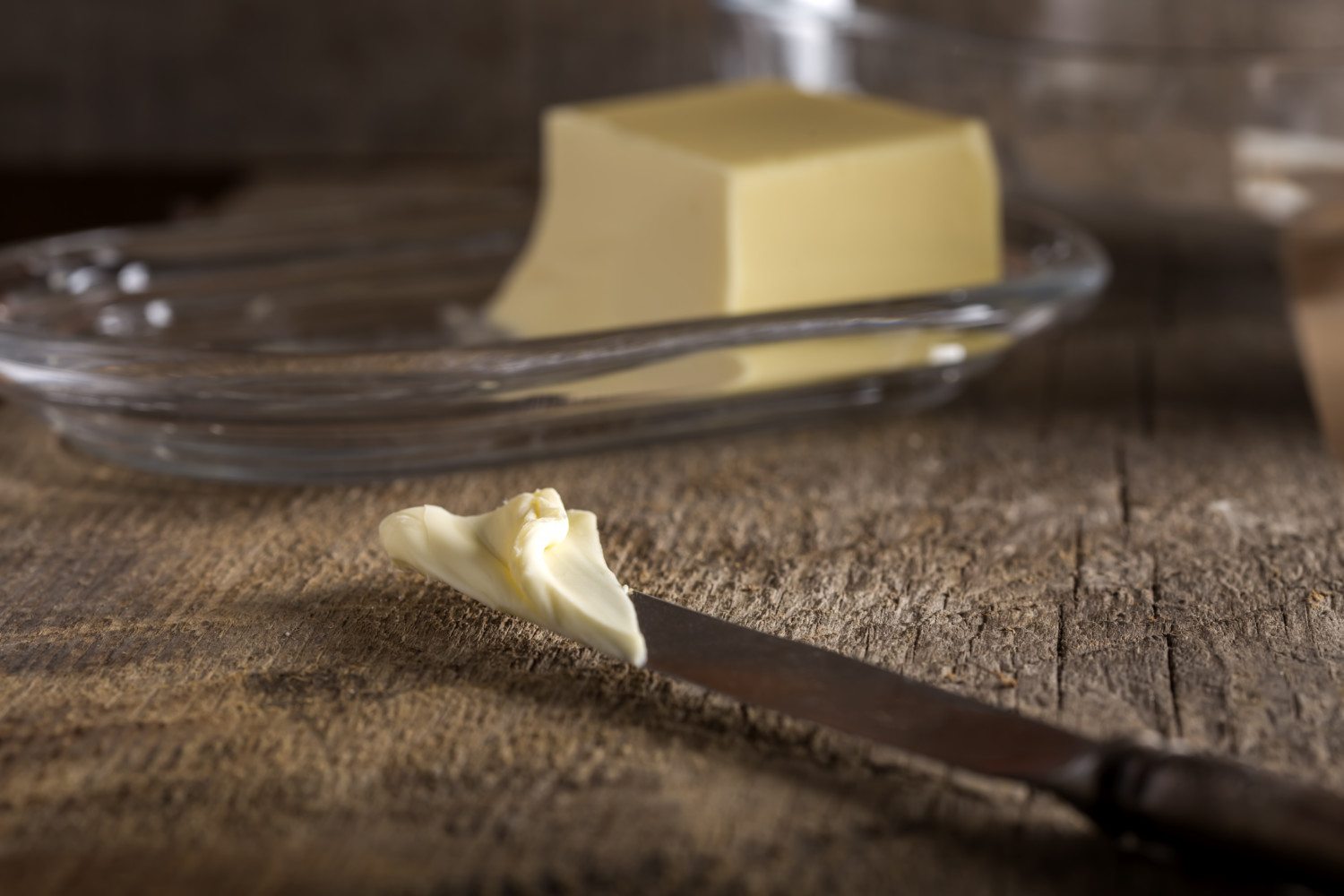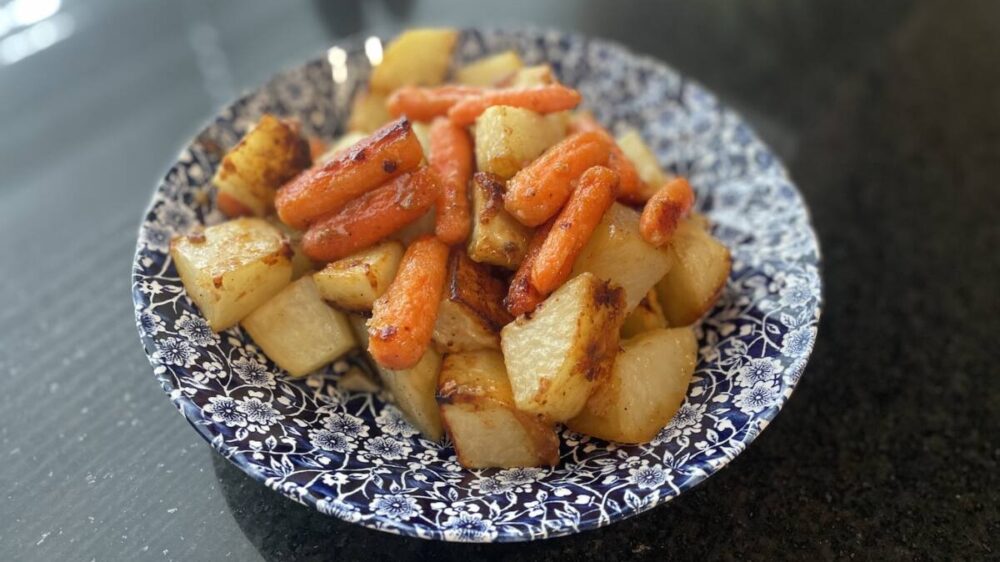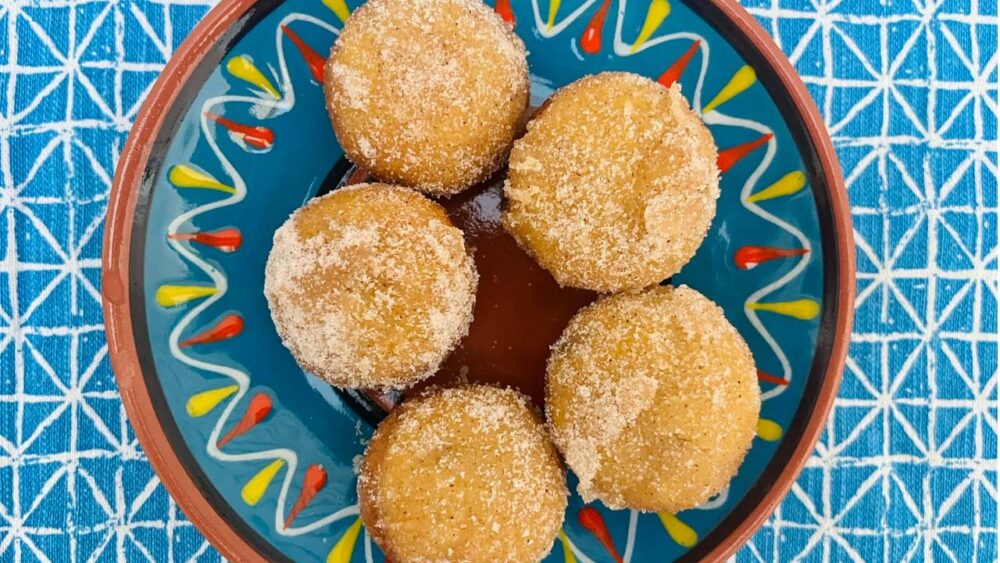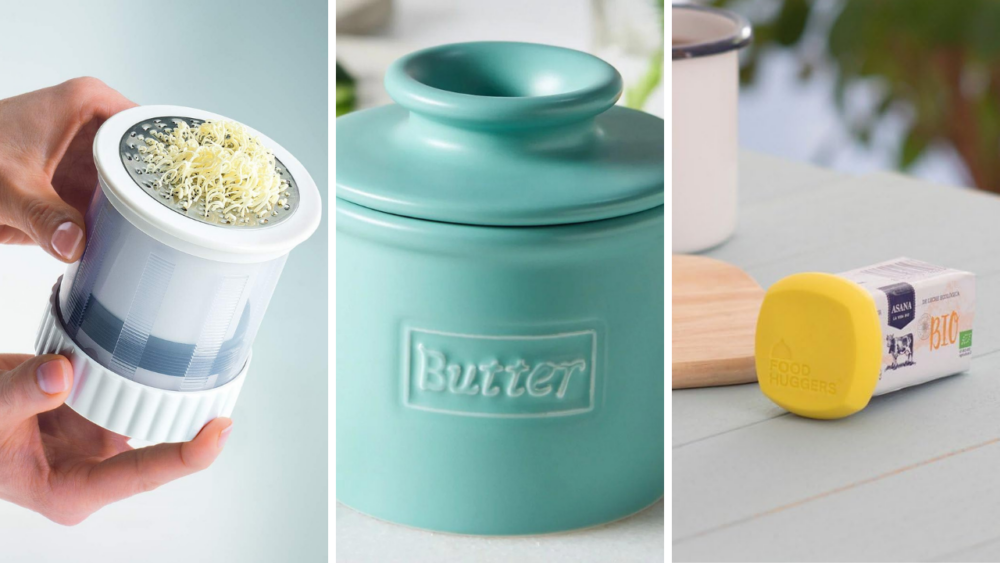Here’s what makes Irish butter different from other butters
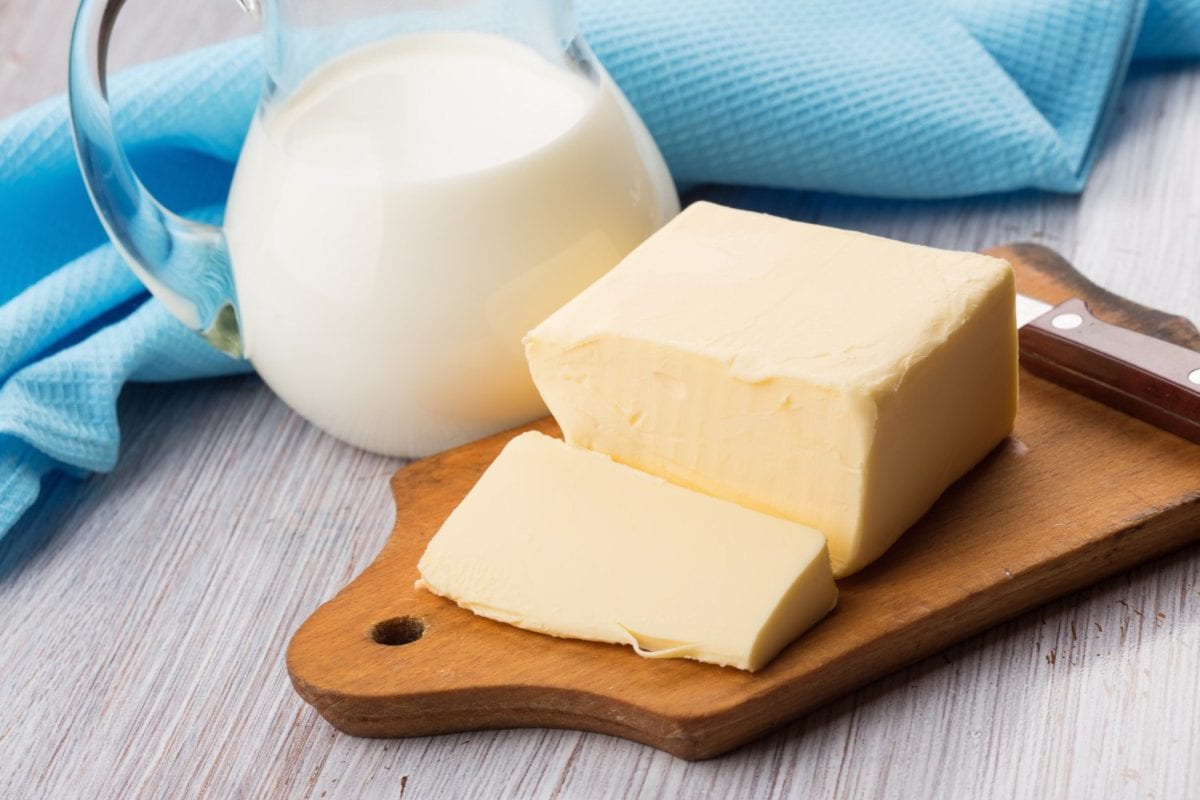
- December 19, 2018 |Last updated on 08/02/2021
With its shiny gold wrapping and bright green label, Kerrygold Pure Irish Butter looks like a present you found in the refrigerated section of the grocery store. For bakers, Kerrygold and other European-style butters really are a gift — starting your baking with these butters will make it easier to achieve a flaky crust or fluffy croissant. You can and should swap these butters in for your go-to American brands, especially if you’re making pastry.
The Difference Between American and European Butters
We’ve explained in the past that European butter differs from American butter due to the level of butterfat it contains. While American butter contains just 80% butterfat, European butter has been churned for a longer period of time, giving it 82% butterfat.
What’s the big deal? That extra 2% of butterfat makes a big difference in flavor and texture. American brands, which contain more water and less butterfat, are simply not as flavorful or spreadable.
It doesn’t seem like a big difference, but for bakers, it will be apparent in your pastries. Having less water in the butter results in flakier biscuits, croissants and pie crusts.
So What Makes Irish Butter Different?
Irish and other European butter brands may look alike, but each type of butter has a distinct flavor that stems from its unique source. Variations in climate and churning process, and in the breed of cow that the butter comes from, all contribute to the particular texture, color and flavor of each brand.
Underneath its shiny golden wrapper, Irish Kerrygold butter is bright yellow. This is because the fresh cream used to make the butter comes from grass-fed cows. The grass in Irish pastures is a brilliant green and packs high levels of beta-carotene. This is what leads to the butter’s golden hue.
While European butters may be new to your refrigerator, Irish butter has long been a prized commodity. In fact, Ireland’s southwest coast has produced rich, flavorful butter for more than 200 years. The Cork Butter Exchange, a system of commercial butter exportation throughout Ireland and Britain that became the largest butter market in the world, adds to the notoriety of butter from the region.
Now, modern pastry chefs turn to it for their creations, with the extra 2% of butterfat making it the better butter for pastries and pie crusts. And if it’s good enough for them, it’s definitely good enough for your pie and cookie recipes.
First up in our brand-new Dynamite Shop series: Buttery Drop Biscuits with Flavored Compound Butter. https://t.co/CWUDi14W4u
— Kerrygold USA (@KerrygoldUSA) September 10, 2020
If the pot o’ gold at the end of the rainbow is actually a tub of creamy Irish butter, we wouldn’t be surprised or disappointed.


